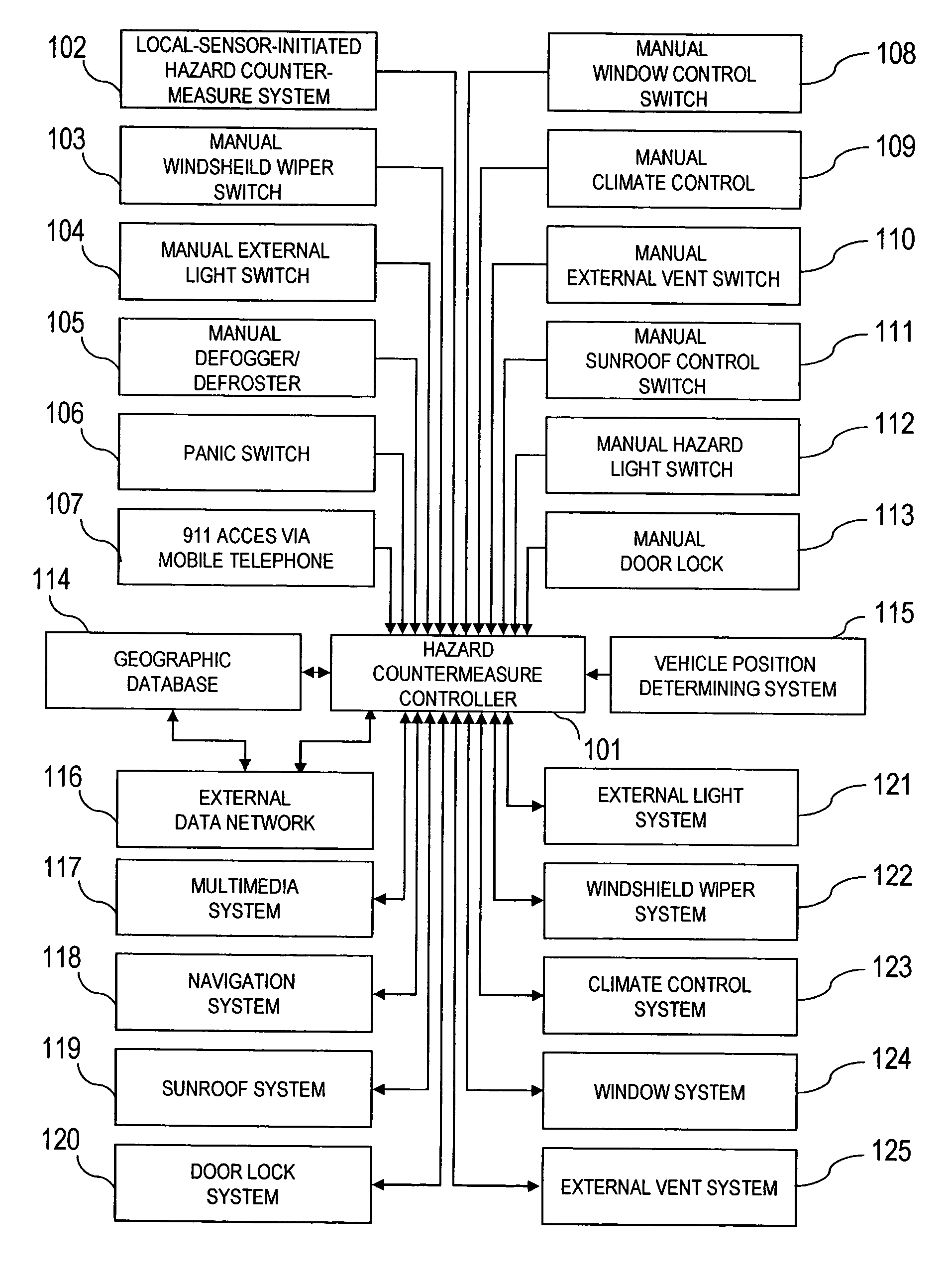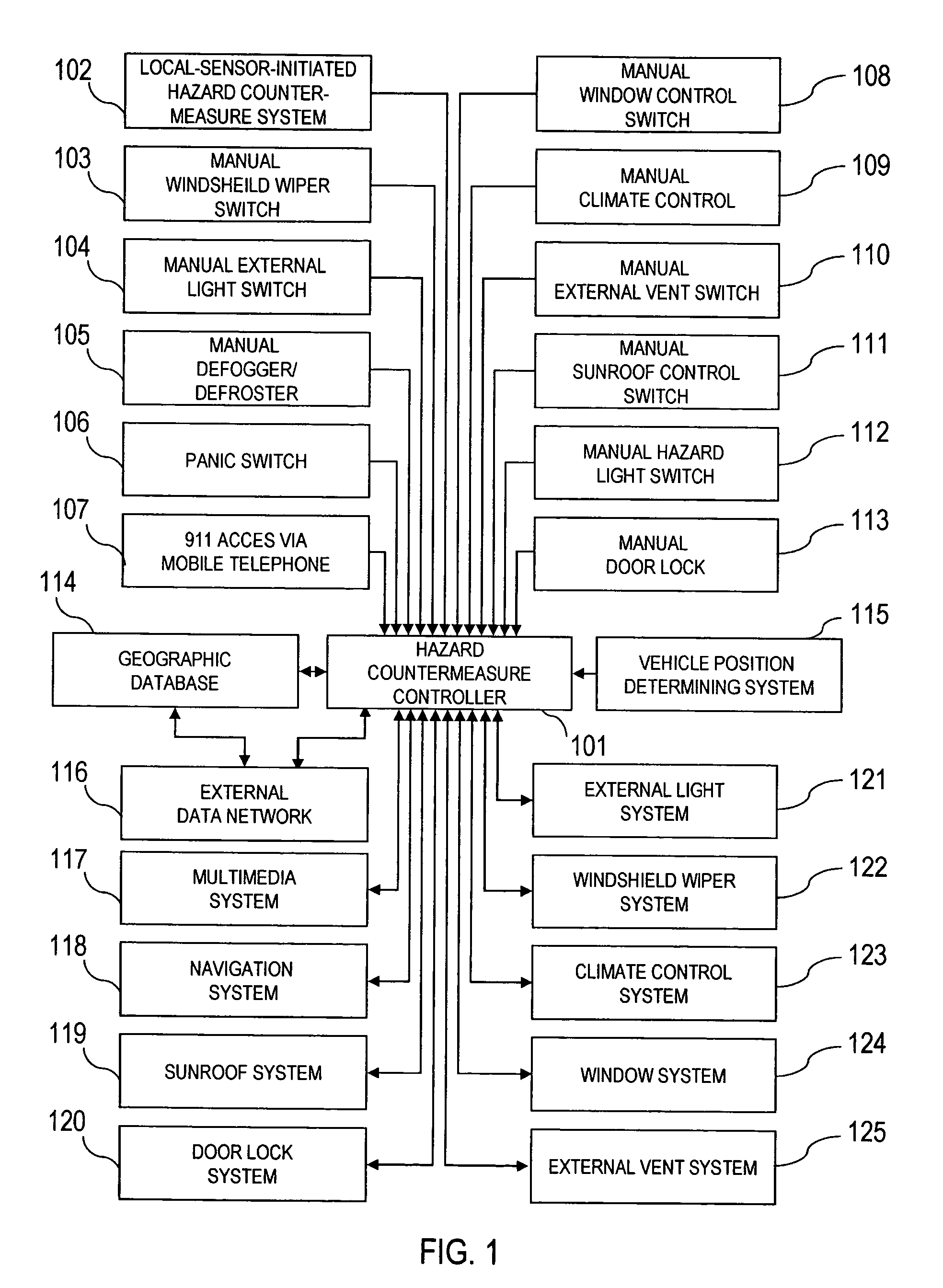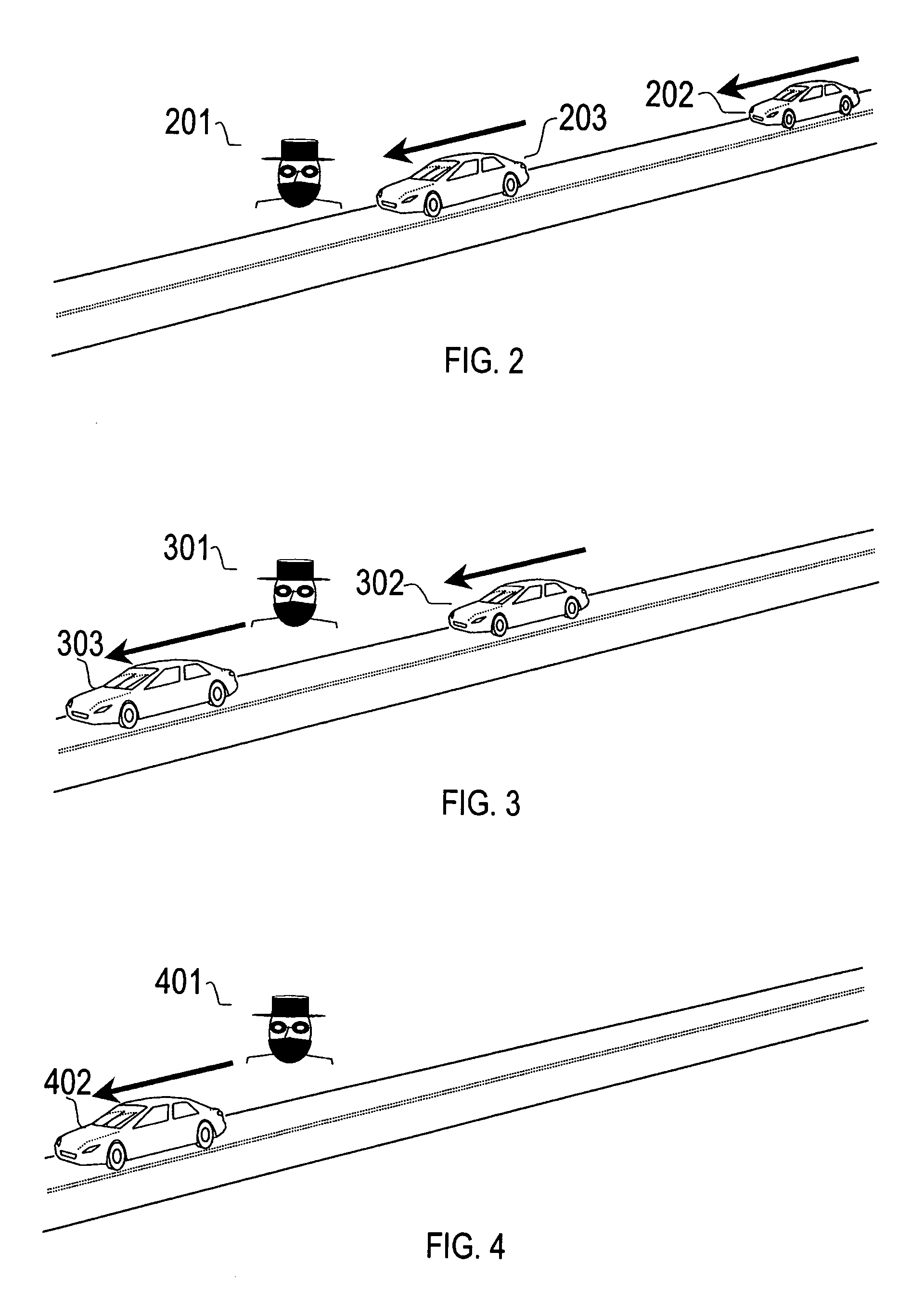Hazard countermeasure system and method for vehicles
a technology for countermeasure systems and vehicles, applied in the field of vehicle control systems, can solve problems such as visibility hazards, transient visibility hazards, and endanger vehicles within, and achieve the effect of reducing the risk of both long-term and transient hazards and reducing the risk of visibility hazards
- Summary
- Abstract
- Description
- Claims
- Application Information
AI Technical Summary
Benefits of technology
Problems solved by technology
Method used
Image
Examples
Embodiment Construction
[0025]The following detailed description of the preferred embodiment of this invention and the attached figures are intended to provide a clear description of the invention without limiting its scope.
[0026]FIG. 1 is a block diagram that shows the information flow from manually activated switches 103-113 or the local-sensor-initiated hazard countermeasure to the hazard countermeasure controller 101. When an event issues from one of these manually or automatically activated systems, indicating a possible response to a hazard, the position of the vehicle is acquired from the vehicle position determining system 115. This information is then transmitted with a time stamp to the geographic database 114, and to the external data network 116 employing TDMA, CDMA, GSM or other cellular telephone networks, or employing wireless protocols for data transmission such as 802.11a / b, 802.11x, 802.11g, DSRC or other similar digital wireless communication means. Alternatively, the external data netwo...
PUM
 Login to View More
Login to View More Abstract
Description
Claims
Application Information
 Login to View More
Login to View More - R&D
- Intellectual Property
- Life Sciences
- Materials
- Tech Scout
- Unparalleled Data Quality
- Higher Quality Content
- 60% Fewer Hallucinations
Browse by: Latest US Patents, China's latest patents, Technical Efficacy Thesaurus, Application Domain, Technology Topic, Popular Technical Reports.
© 2025 PatSnap. All rights reserved.Legal|Privacy policy|Modern Slavery Act Transparency Statement|Sitemap|About US| Contact US: help@patsnap.com



